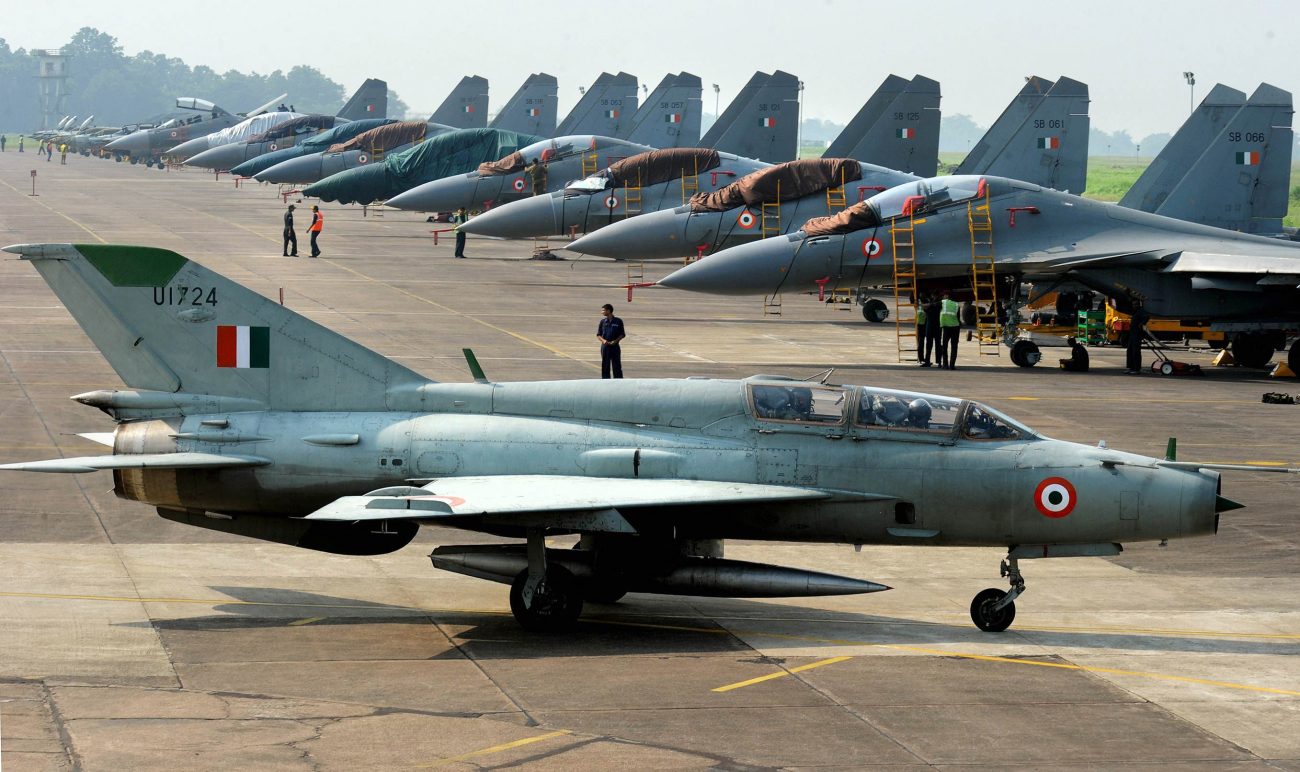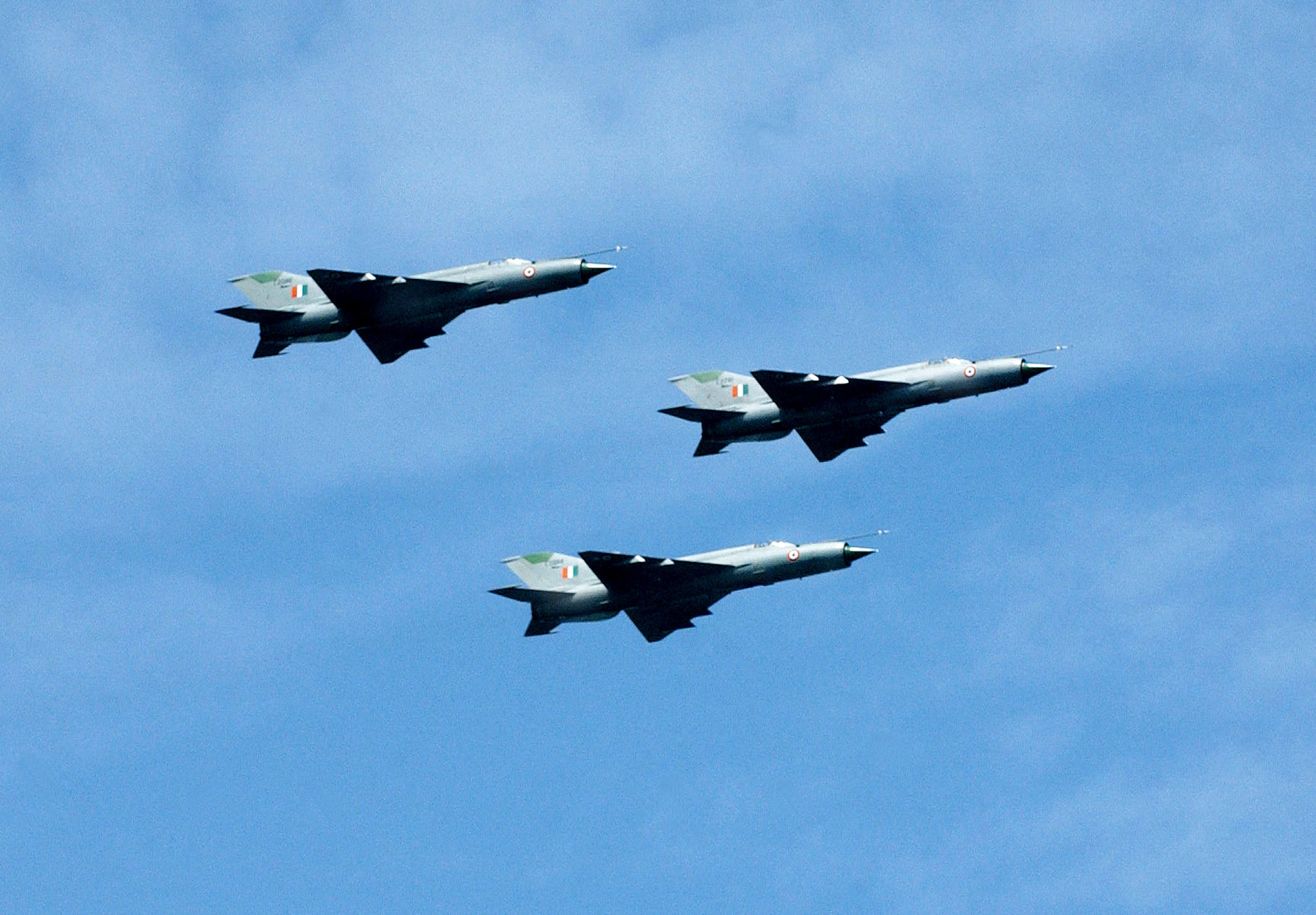As I sit here reflecting on my career in the Indian Air Force, the news of the MiG-21’s impending retirement in September 2025 fills me with a mix of nostalgia and pride. I am Group Captain MJ Augustine Vinod (Retd), a fighter pilot who has logged countless hours on this remarkable machine.
I’ve flown variants like the MiG-21 Type 77, Type 75, Type 66, and Type 69, amassing a wealth of sorties that shaped my life.
This aircraft, often called the “Flying Coffin” by critics but a “Rocket with Wings” to those who mastered it, has been my companion through triumphs and near-tragedies.
I’ve had two brushes with death on it—one involving an engine burst during takeoff that led to a crash in 1995, and another mid-flight hydraulic failure that tested every ounce of my training.
Yet, I fondly remember the MiG-21 as a faithful steed that served the Indian Air Force (IAF) with distinction for over six decades. As it flies into the sunset, I want to chronicle its journey—not just in general, but particularly in the IAF, where it became an icon of resilience and ingenuity.
In this article, I’ll start with the MiG-21’s history and unique features, as requested, before delving into its global odyssey and its profound impact on the IAF. Drawing from my experiences and the aircraft’s storied past, I’ll aim to paint a comprehensive picture. This isn’t just a technical recount; it’s a tribute from someone who lived it.
The Birth of A Legend: History & Development
The MiG-21’s story begins in the frostbitten hangars of the Soviet Union during the early 1950s, a time when the Cold War was heating up and aerial supremacy was the ultimate prize.
The Mikoyan-Gurevich Design Bureau, led by Artem Mikoyan and Mikhail Gurevich, was tasked with creating a successor to the successful MiG-15, MiG-17, and MiG-19 jets.
The goal was ambitious: build a lightweight, supersonic fighter-interceptor that could climb like a rocket, intercept high-altitude bombers like the American B-52 or U-2 spy plane, and engage in dogfights if needed.
Development kicked off with prototypes in 1954. The initial design, dubbed Ye-1, was quickly scrapped due to engine inefficiencies. It evolved into the Ye-2 “Faceplate,” a swept-wing prototype, but the real breakthrough came with the delta-winged Ye-4 and Ye-5.
The Ye-4 made its maiden flight on June 16, 1955, piloted by Grigory Sedov, reaching supersonic speeds soon after. By 1956, the Ye-5 prototype set speed records, and the aircraft was publicly unveiled at the Tushino Air Show, stunning Western observers. NATO assigned it the codename “Fishbed,” a moniker that stuck through its variants.
Production began in 1959 at factories in Gorky, Moscow, and Tbilisi. The first model, MiG-21F (Izdeliye 72), entered Soviet service in 1960.
Between 1959 and 1986, the USSR produced 10,645 units, with additional licensed builds in Czechoslovakia (194 units) and India (840 units by Hindustan Aeronautics Limited, or HAL), totaling approximately 11,678 aircraft.
This made it the most-produced supersonic jet in history, outpacing even the American F-4 Phantom in sheer numbers. The Chinese reverse-engineered it as the Chengdu J-7, adding thousands more to the global tally.
What drove this prolific production? Simplicity and cost-effectiveness. The MiG-21 was designed for mass export to Warsaw Pact nations and developing countries, where maintenance infrastructure was limited.
It could operate from rough airstrips, required minimal ground support, and was cheap to build—about one-third the cost of contemporary Western fighters. Yet, it packed a punch: capable of Mach 2 speeds, it was the first Soviet aircraft to seamlessly blend fighter and interceptor roles.

Unique Features: A Delta-Winged Marvel
The MiG-21’s design was revolutionary for its era, blending aerodynamics, power, and lethality in a compact frame. At its core is the “tailed delta” configuration: a thin, swept-back delta wing with a horizontal tailplane, providing excellent high-speed stability and maneuverability.
This setup allowed for sharp turns and rapid climbs, but it came with trade-offs, such as high landing speeds (around 340 km/h) and limited low-speed handling.
One standout feature is the nose-mounted shock cone intake, a conical spike that regulates airflow to the engine at supersonic speeds, preventing compressor stalls. This was unique and efficient, but left little room for a large radar—early models had a tiny ranging radar, which was upgraded in later variants to the RP-21 Sapfir or RP-22.
The engine, initially the Tumansky R-11 turbojet (5,100 kgf thrust dry, 6,100 kgf with afterburner), evolved to the R-13 (6,490 kgf) and R-25 (7,100 kgf with afterburner, plus a 9,900 kgf emergency boost).
This “second reheat” or Emergency Power Reserve (EPR) was a game-changer in dogfights, giving a thrust-to-weight ratio over 1:1, allowing vertical accelerations that left opponents in the dust.
Armament was versatile: an internal 23mm GSh-23 cannon with 200 rounds, plus hardpoints for air-to-air missiles like the K-13 (AA-2 Atoll, a copy of the American Sidewinder), R-60 Aphid, and ground-attack options like S-24 rockets, FAB-500 bombs, or UB-16 pods. 10 Fuel capacity was a weak point—early models carried just 2,340 liters internally, limiting endurance to 45 minutes without drop tanks.
However, this was mitigated by its agility: the MiG-21 could execute high-alpha (angle of attack) maneuvers, reaching up to 30 degrees, far beyond modern fly-by-wire jets that limit pilots for safety reasons.
Cockpit-wise, it was rudimentary—no fly-by-wire, just hydraulic controls and analog instruments. Visibility was excellent from the bubble canopy, but the ejection seat (KM-1 in early models, K-36 in upgrades) proved to be a lifesaver, although ejections at low speeds were still risky.
Upgrades like the Indian Bison variant added multifunction displays, helmet-mounted sights, and beyond-visual-range missiles, blending old-school grit with modern tech.
In my flying days, what struck me most was its responsiveness. It’s a completely manual aircraft— no automation to bail you out. Master it, and it dances; mishandle it, and it bites.
I recall pushing it to high alpha in dissimilar air combat training (DACT), watching a Eurofighter Typhoon overshoot as I bled speed to near-stall. That’s the MiG-21’s magic: unforgiving yet rewarding.
The Global Journey: From Cold War Icon To Battlefield Veteran
The MiG-21’s operational history spans over 60 countries and four continents, making it a true global warrior. It debuted in Soviet service as an interceptor, guarding against NATO incursions. But its real baptism came in conflicts worldwide.
In Vietnam (1965-1973), North Vietnamese MiG-21s, often piloted by Soviet-trained aces, claimed over 200 U.S. aircraft, including F-4 Phantoms and B-52s. Tactics like hit-and-run ambushes exploited its climb rate and speed, earning it the nickname “Silver Swallow.” Despite losses to American Sidewinders and radar-guided Sparrows, it achieved a 1:1 kill ratio in some phases.
The Middle East saw intense action. In the 1967 Six-Day War, Egyptian and Syrian MiG-21s faced Israeli Mirages and Phantoms, suffering heavy losses due to poor tactics but scoring kills.
The 1973 Yom Kippur War was better: upgraded MiG-21PFMs with R-60 missiles downed Israeli jets, though overall Arab air forces were outmatched. In the Iran-Iraq War (1980-1988), Iraqi MiG-21s conducted ground strikes, while Syrian ones clashed with Israelis over Lebanon in 1982, where advanced F-15s and F-16s dominated.
Africa and Asia had their shares. During the Ogaden War (1977-1978), Cuban-piloted Ethiopian MiG-21s played a crucial role in turning the tide against Somalia. Angolan MiG-21s clashed with South African Mirage fighters in the Border War. In Afghanistan (1979-1989), Soviet MiG-21s provided close air support, vulnerable to Stinger missiles.
Upgrades kept it relevant: Israel’s IAI “Finger” program, Romania’s LanceR with Elbit avionics, and Russia’s MiG-21-93 with Phazotron radar. Its ruggedness—able to fly from dirt strips—and low cost made it ideal for cash-strapped air forces.
But glory came with a price: high accident rates due to its demanding nature. Over 1,000 crashes worldwide, often from engine failures or pilot error in low-visibility conditions.

MiG-21 In IAF: A Saga Of Valor & Evolution
Now, to the heart of my story—the MiG-21’s journey in the IAF, where it transformed from a foreign import to a homegrown hero.
India procured the MiG-21 in 1961, amid tensions with China and Pakistan. After evaluating Western options, such as the F-104 Starfighter, we chose the Soviet jet for its superior performance and potential technology transfer benefits. The first six MiG-21F-13s arrived in 1963, assembled by HAL, marking our entry into the supersonic era.
Variants flooded in: The Type 77 (MiG-21FL, “Fishbed-D”) was our mainstay, an export PF with R-11 engine and simplified radar, license-built from 1966. Type 75 was the MiG-21bis (“Fishbed-N”), featuring an R-25 engine and advanced avionics, produced by HAL from 1980 to 1987.
Type 66 referred to early trainers like the MiG-21U (“Mongol-A”), while Type 69 was the MiG-21UM (“Mongol-B”), which had been modernized for instruction. We operated over 874 MiG-21s at peak, across 19 squadrons.
Its combat debut was the 1965 Indo-Pak War. MiG-21s from No. 28 Squadron provided air cover, downing Pakistani F-86 Sabres and claiming the IAF’s first supersonic kill. However, it was during the 1971 Bangladesh Liberation War that it truly shone.
MiG-21s flew over 500 sorties, destroying Pakistani armor, ships, and aircraft. At Boyra, four MiG-21FLs shot down three Sabres in minutes. In the east, they neutralized the Pakistani Air Force in days, enabling India’s victory.
Post-1971, upgrades began. The 1990s Bison program (MiG-21-93) integrated Russian Kopyo radar, French avionics, and R-77 missiles, making it a mini fourth-generation fighter. It proved its mettle in Kargil (1999), flying high-altitude patrols, and in Operation Safed Sagar.
My personal journey with the MiG-21 started in the early 1990s. Trained on Kiran jets, I transitioned to the Type 77 at the MiG Operational Flying Training Unit. The speed hit me like a thunderbolt—things happened so fast! I flew countless low-level strikes over the Thar Desert, mastering its quirks.
One memorable mission in 1995: During an inspection, poor visibility forced the lead formation to abort. As ground standby, I took off solo, navigated by memory, and completed the strike. It earned my squadron accolades, but highlighted the risks.
Then came the brushes with death. On March 1, 1995, rolling for takeoff in a Type 75, the engine burst into flames. I had 11 seconds to stop, ejecting as fire engulfed the jet. Miraculously, I survived with burns.
Another incident occurred: mid-flight, a hydraulic failure caused loss of control. I nursed it back, landing safely. These reinforced the MiG-21’s unforgiving side, but also its robustness—I walked away both times.
Accidents plagued the fleet: Over 500 crashes since 1963, killing 170+ pilots, often from bird strikes, engine failures, or human error. Critics called it the “Flying Coffin,” but this was largely due to intensive training and aging airframes. Upgrades reduced rates, but the toll was noticeable.
By the 2010s, modernization waned. The IAF began phasing out squadrons, replacing them with Tejas LCA Mk-1A. The last MiG-21 Bison squadron, No. 3 “Cobras,” will retire on September 19, 2025, after 62 years.
It’s bittersweet— the end of an era, but a step toward modernity.
The MiG-21 taught me resilience. From its delta wings slicing through clouds to its roar on afterburner, it was poetry in motion. Globally, it democratized air power; in India, it forged our defense spine.
As it retires, I salute this sunset warrior. Fly high, old friend. I WILL MISS YOU
- Group Captain MJ Augustine Vinod (Retd), VSM, is a former Mirage 2000 fighter pilot, air accident investigator, and co-founder of AMOS Aerospace. He writes on emerging defense technologies, AI in warfare, and India’s aviation future.
- This is an Opinion Article. Views Personal Of The Author
- He tweets at @mjavinod




